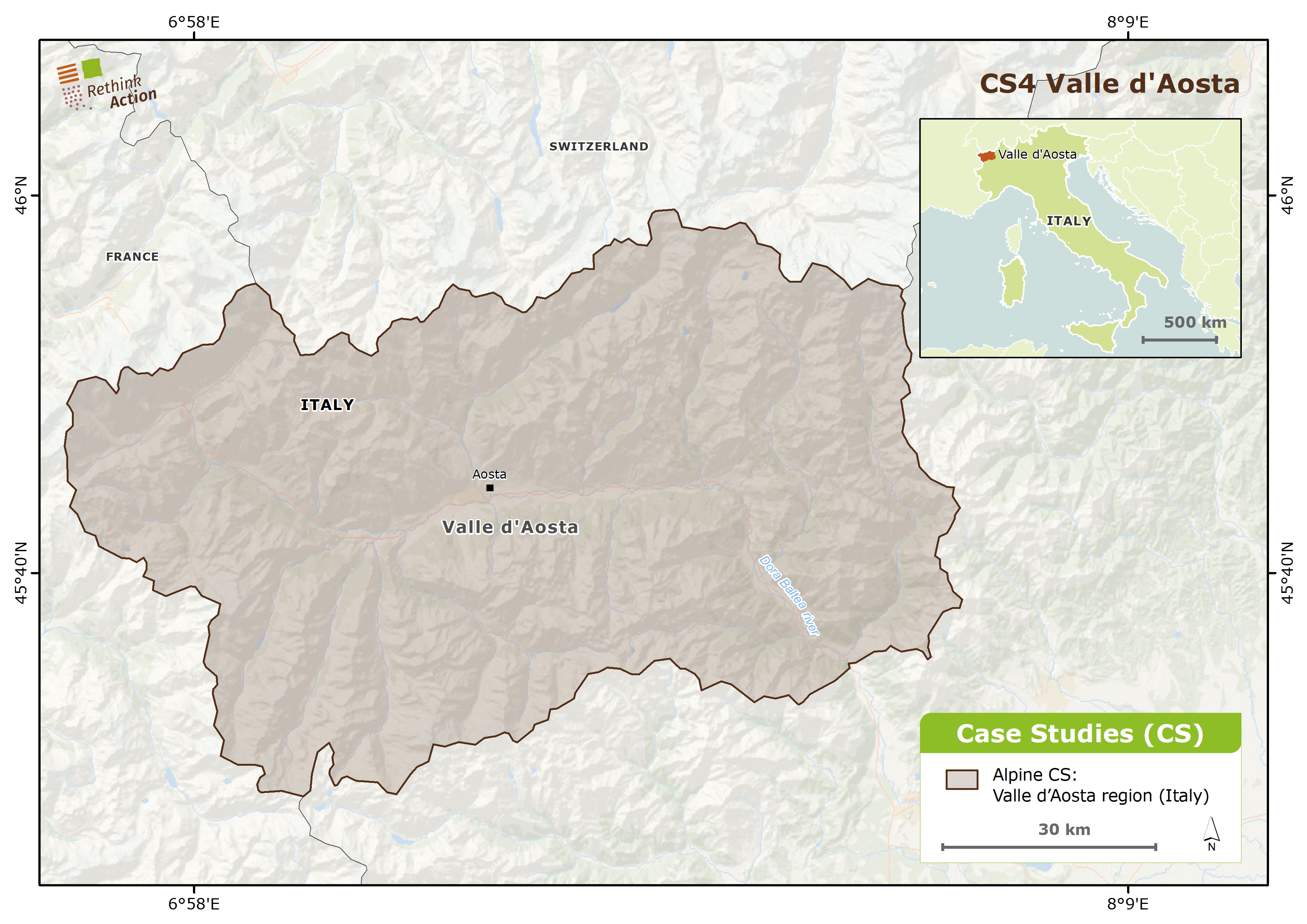Valle d’Aosta Region is the smallest and least densely populated region in Italy. It is located in the north-western part and the territory is completely mountainous and has the highest peaks of the Italian peninsula. The main valley that gives the region its name is formed by the Dora Baltea, the main river, which receives numerous tributaries that shape the remaining valleys.
The presence of glaciers and an extended snowpack in winter determine the runoff regime, which is marked by minimum flow values in winter and maximum flows in spring and summer, when the glaciers and snow melt down. The ice covers approximately 5.5 % of the total area and the region has a great number of lakes, some of which are artificial and are used for the regulation of hydropower production.
The economy is mainly based on tourism and related activities. Also important is the production of hydroelectric energy, which exploits the morphology of the territory. Agriculture and breeding (cattle) are of modest importance.
Valle d’Aosta has a particular energy system compared to other Italian regions as it is characterised by a high production of electricity from renewables, deriving mainly from hydroelectric sources. Electricity exports make up around 70% of the total production and offer an alternative to electricity derived from thermoelectric power plants and therefore a reduction of consumption from fossil sources.
Climate change will produce significant changes in the short and long term that will affect the main natural environments and socio-economic sectors of the Region. The regional territory, although exposed to the effects of climate change, offers elements of non-negligible attractiveness, linked to cooler temperatures than in the lowlands, as well as an outstanding natural landscape.
The extension of forests and the production of woody biomass will benefit from warmer temperatures. However, reduced summer water availability may weaken wildlife populations and make them more vulnerable to biotic or abiotic stress (e.g. parasites, diseases, extreme weather events, fires). Species will migrate to higher altitudes towards and beyond the upper limits of their current distribution range and the alpine flora and fauna can gradually get replaced by more competitive species with consequent risk for the maintenance of biodiversity.
In lowland urban areas, heat islands can increasingly risk the health of vulnerable groups. The rise in temperatures will particularly adversely affect allergic people and those suffering from cardiovascular problems. The number of elderly tourists in search of cooler temperatures at higher altitudes is therefore expected to grow; their exposure to greater physical exertion due to the mountainous landscape could result in more hospital admissions during the summer.
The regional territory is particularly vulnerable to the natural hazards associated with the intensification of the water cycle, the increase in the frequency of extreme weather events and the effects of the temperature increase on the cryosphere. The natural hazards triggered by these processes affect vast portions of the regional territory, from the valley and urbanised areas up to high altitudes, affecting directly and indirectly all the main socio-economic sectors. In parallel, it is also necessary to consider the evolution of risk scenarios on health mediated by the spread of new pathogens, new allergens, invasive species, extreme events and interactions between climate and atmospheric pollutants. In this context of emerging risks, it is important to consider the criticality represented by the temporal variation of the population density, and therefore of exposure to hazards due to the seasonality of tourist flows and the migratory flows from other geographical areas which are more exposed to the effects of climate change. To make the regional community more resilient to these emerging risks, adaptation strategies and actions will have to take into account the possible interactions between different sectors.

Image Source: GMV
Sources:
Strategia di adattamento ai cambiamenti climatici RAVA 2021-2030

